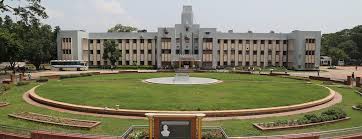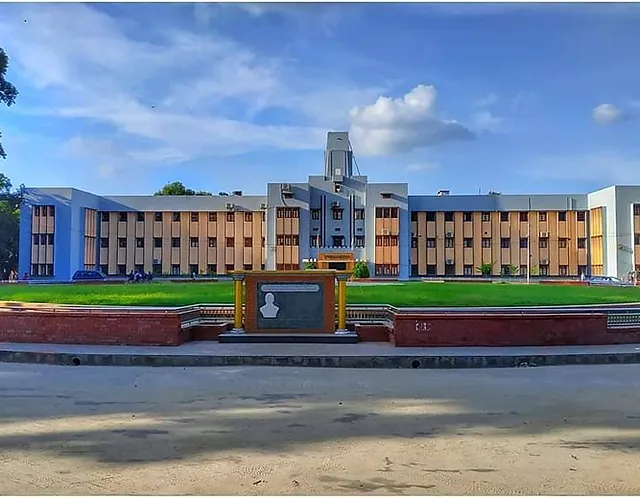Introduction

Rajshahi University (RU), one of the most prestigious higher educational institutions in Bangladesh, has played a significant role in shaping the academic and cultural landscape of the country. Established in 1953, it has emerged as a center of excellence in research, education, and intellectual development. This article delves into the university’s history, academic structure, faculties, notable achievements, and contributions to national and international academia.
History and Establishment
Rajshahi University was established on July 6, 1953, in response to the growing demand for higher education in northern Bangladesh. The university was founded through the Rajshahi University Act of 1953, with its first academic session commencing in 1954. Initially, classes were held at Rajshahi Government College before the university moved to its permanent campus in Motihar, Rajshahi. Since its inception, RU has expanded significantly, becoming a hub for students and scholars from across the nation and beyond.
Campus and Infrastructure
The Rajshahi University campus is one of the largest in Bangladesh, covering approximately 753 acres. It features a picturesque setting with lush greenery, modern infrastructure, and well-maintained gardens. The campus hosts administrative buildings, academic faculties, research centers, hostels, libraries, and recreational facilities. The university’s central library, the Varendra Research Museum, and state-of-the-art laboratories provide an enriched academic environment for students and faculty members.
Academic Structure and Faculties
Rajshahi University consists of numerous faculties and departments, offering undergraduate, postgraduate, and doctoral programs in various disciplines. Currently, the university has 12 faculties, which are further divided into 59 departments. These faculties include:
- Faculty of Arts
- Faculty of Law
- Faculty of Science
- Faculty of Business Studies
- Faculty of Social Sciences
- Faculty of Agriculture
- Faculty of Engineering
- Faculty of Biological Science
- Faculty of Fine Arts
- Faculty of Geosciences
- Faculty of Veterinary and Animal Sciences
- Faculty of Education and Research
Each faculty is committed to providing quality education and research opportunities, making RU a prominent center for academic excellence in Bangladesh.
Research and Innovation
Research is a core component of Rajshahi University’s academic mission. The university has numerous research centers and institutes that conduct groundbreaking studies in various fields, including science, humanities, and social sciences. Some of the notable research institutions affiliated with RU include:
- Varendra Research Museum
- Institute of Bangladesh Studies (IBS)
- Center for Interdisciplinary Research
- Rajshahi University Science and Technology Research Center
RU also collaborates with national and international universities and research organizations to facilitate knowledge exchange and scientific advancements.

Student Life and Extracurricular Activities
Student life at Rajshahi University is vibrant and dynamic, with various extracurricular activities that complement academic pursuits. The university has numerous student organizations, cultural clubs, and sports facilities. Popular student associations include:
- Rajshahi University Debating Society (RUDS)
- Cultural Organizations
- Science and Research Clubs
- Social Welfare Groups
Sports are also an integral part of student life, with facilities for football, cricket, basketball, and athletics. RU hosts inter-university and national sports competitions, fostering teamwork and discipline among students.
International Collaborations and Exchange Programs
Rajshahi University has established partnerships with several international universities and research institutions. These collaborations facilitate student and faculty exchange programs, joint research projects, and academic networking. Universities in Europe, North America, and Asia have active exchange agreements with RU, providing students with global exposure and learning opportunities.
Alumni and Notable Figures
RU has produced many distinguished alumni who have significantly contributed to various fields, including politics, academia, business, and literature. Some notable alumni include:
- Dr. Muhammad Yunus (Nobel Laureate in Peace, 2006)
- Abul Barkat (Economist and Scholar)
- Prominent political leaders and authors who have shaped Bangladesh’s socio-political landscape
Challenges and Future Prospects
Despite its achievements, Rajshahi University faces several challenges, including funding constraints, student politics, and infrastructure maintenance. However, ongoing reforms and modernization efforts aim to address these issues and enhance the university’s academic standing. Future plans include expanding research facilities, incorporating more technology-driven education, and fostering international collaborations.
Conclusion
Rajshahi University remains a cornerstone of higher education in Bangladesh, contributing immensely to academic and social development. With its rich history, robust academic programs, and commitment to research and innovation, RU continues to be a beacon of knowledge, producing skilled professionals and thought leaders who shape the nation’s future.
Awesome https://shorturl.at/2breu
Very good https://shorturl.at/2breu
Good https://lc.cx/xjXBQT
Good https://lc.cx/xjXBQT